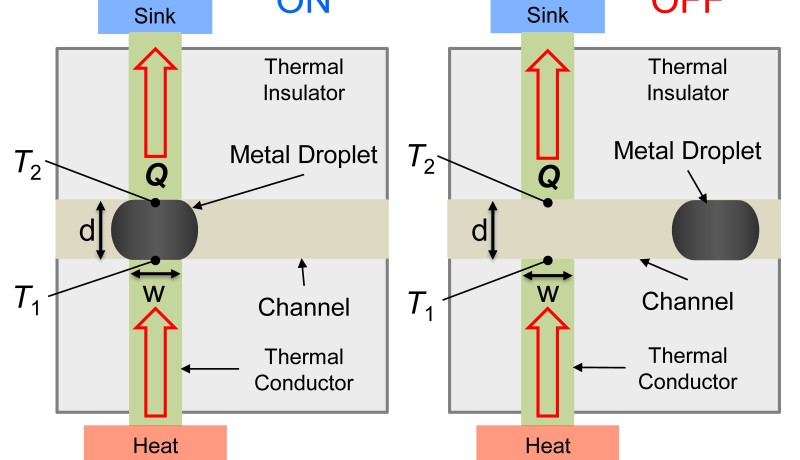Liquid metal droplet thermal switch
on

Researchers from the University of Illinois have developed a new technique that enables the heat flow in electronic circuits to be turned 'on' or 'off'. Their findings were published in Applied Physics Letters.
Switches are used to operate many technical products and technical systems. On a smaller scale electronic switches in the shape of transistors are used to turn electronic devices on or off, or to route logic signals around a circuit.
Engineers have been searching a long time for a switch that can control heat flows, particularly for electronic systems where the control of heat flow could significantly improve the performance and reliability of a system. However, the creation of such a thermal switch requires overcoming some considerable challenges.
“A heat flow occurs when you have a region with a higher temperature near a region with a lower temperature,” according to professor William King. "To control the heat flow we designed a specific heat flow path between the warm and cold regions, and subsequently created a way to interrupt the heat flow path on demand".
The technology is based on the movement of a liquid metal droplet. The metal droplet can be placed to complete the heat flow path. And the other way around, the heat flow path can be removed to limit the heat flow.
The researchers demonstrated and modelled the technology in modern electronic systems. On one side of the switch was a heat source from a power electronics component and on the other side of the switch was a liquid-based cooling system for the heat dissipation. When the switch was turned on it could conduct more than 10 W/cm2 of heat. As soon as the switch was turned off, the heat flow dropped nearly 100x.
The next step is to integrate the switch with power electronics on a circuit board. The researchers expect to have a working prototype later this year.


Discussion (0 comments)